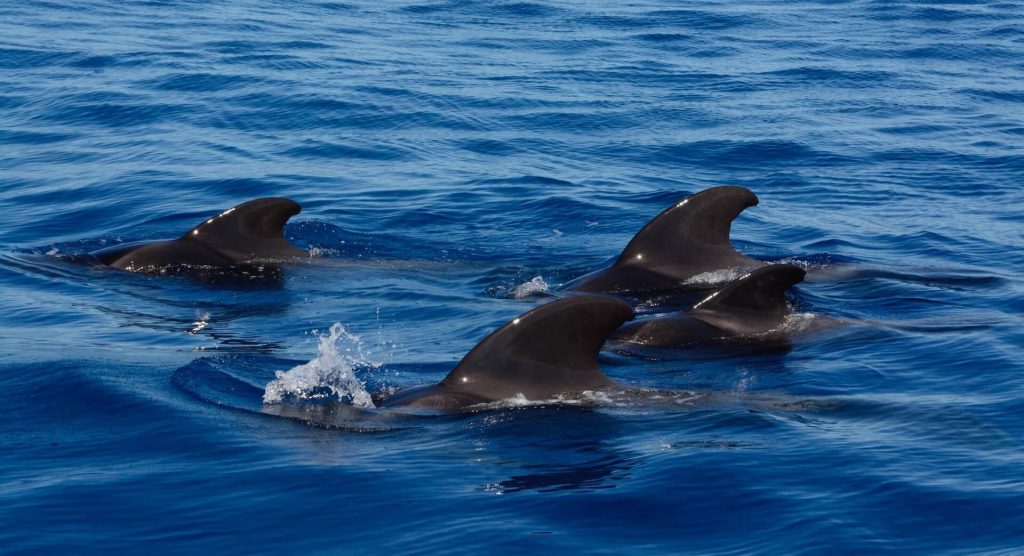Dolphin Communications: Whistling, Name-Calling, and FlipperSlapping
Wednesday, October 21st, 2020 | Blog

Given the acoustic properties of the medium in which they live and their highly developed auditory senses, it is no surprise to learn that most cetacean communications are sonic.
Dolphins have a vocabulary of clicks and whistles uttered sometimes above but mostly under water. When bow-riding (see Surface Behaviour), they often use these high-frequency calls, along with echolocation, to communicate or orientate themselves as they jostle for the best riding position. At these times, the sounds they make may be audible to humans. In most other circumstances, they are picked up more effectively using an underwater microphone.
Dolphin whistles are frequency-modulated, meaning that they rise and fall in pitch. It is probable that these modulations encode information, and that they constitute a kind of language. Though omnidirectional at lower frequencies, dolphin whistles contain harmonics that may be more directional, making possible the dolphin equivalent of person-to-person communication. Individual dolphins also identify themselves with unique ‘signature whistles’ – high-frequency sounds they make while trailing bubbles from their blowholes, effectively calling out their own names. Each dolphin develops its personal signature whistle during infancy.
Only a fraction of these sounds is audible to humans. Dolphin ears work best at frequencies well above the upper limits of human hearing.
Apart from whistles and echolocation clicks, dolphins also communicate using a broad repertoire of mechanical noises such as jaw-snapping, flipper-slapping, tail slapping, and loud booms made by crash-diving after leaping into the air.
By Howard Martenstyn.